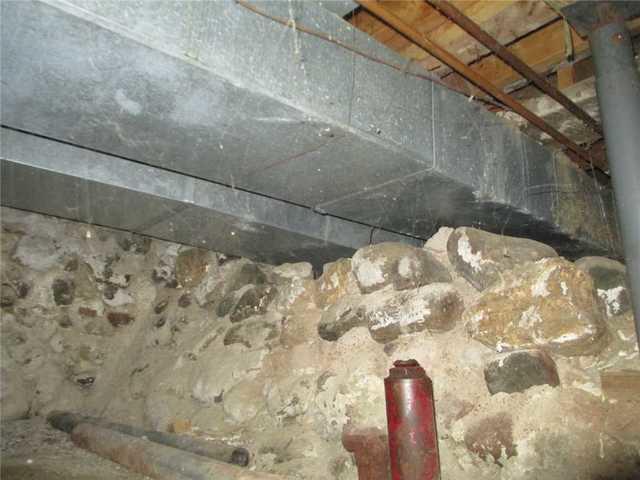
Gaps Between Wall and Ductwork Cause Problems
The basement had gaps between the stone walls and various installations, like pipes and ductwork. This leads to heat loss, which affects the house upstairs.
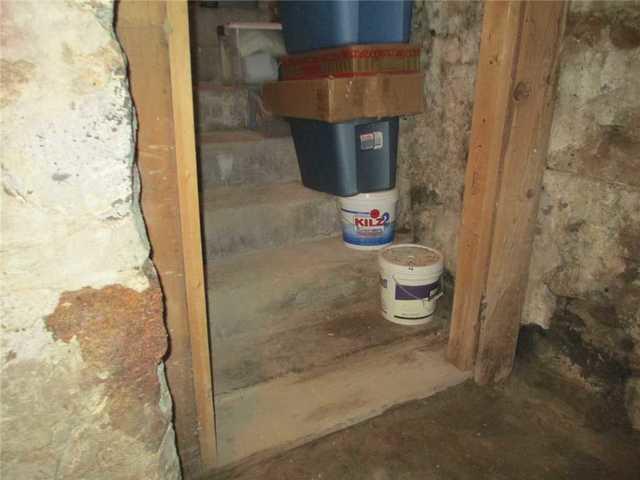
Water Damage Around Stairway
The area around and behind a stairway - often referred to as the cove - is a major point of water problems in many homes. Here, you can see water-damaged stairs.
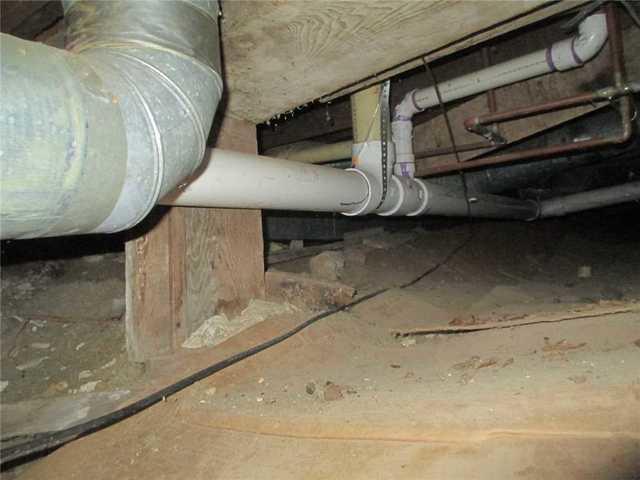
Problematic Crawl Space Adds to Problem
There was a small crawl space off of the basement that did nothing other than house some pipes and add to the humidity and water in the basement. As you'll see later in this gallery, we used CleanSpace to protect the basement from the crawl space.
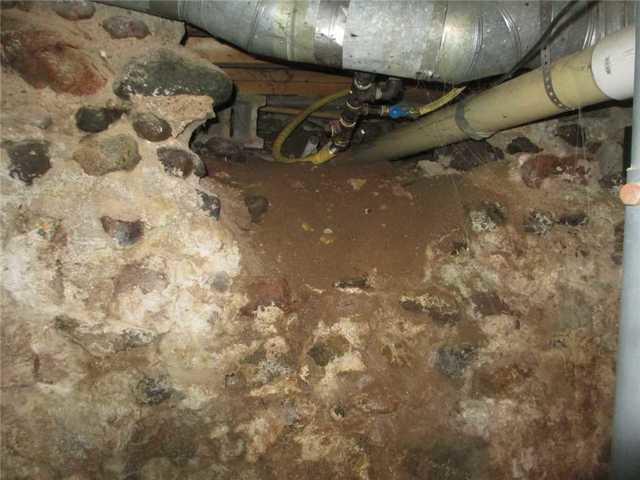
Deteriorating Wall Leaks Water and Air
This wall had multiple water entry points and, as you can see from the gap around the pipes, was a major insulation leech.
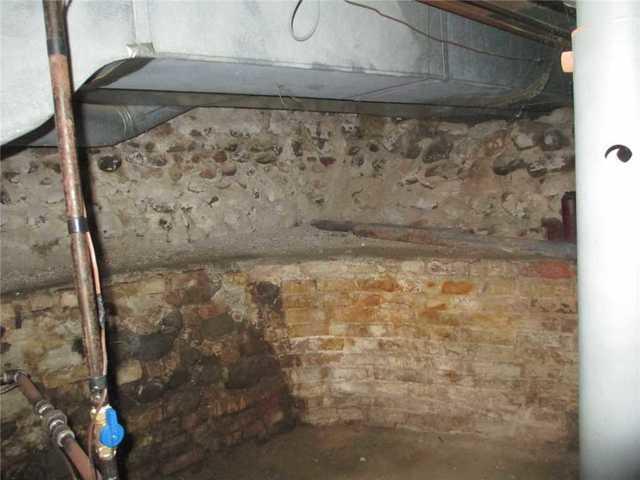
Water Damage Causes Crumbling Stone Wall
Constant water streaming in degrades both the stones that make up the stone wall, and the mortar connecting them. This is especially dangerous with stone walls (vs poured) because you can't really repair them if they start falling apart.
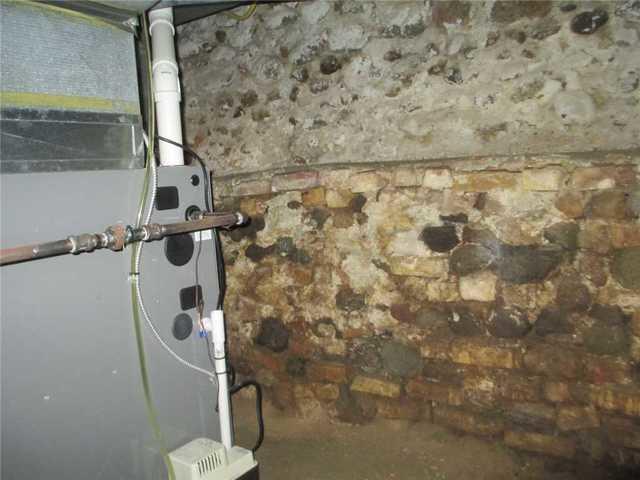
Water Damaged Stone Wall
The discoloration and crumbling in the wall are sure signs of water damage.

Preparing Yard for Discharge Line
This parade of buckets has a purpose - they're holding the excavated soil dug up in order to bury the discharge line in the yard. Once it's in, we'll replace the dirt and the salvageable sod.
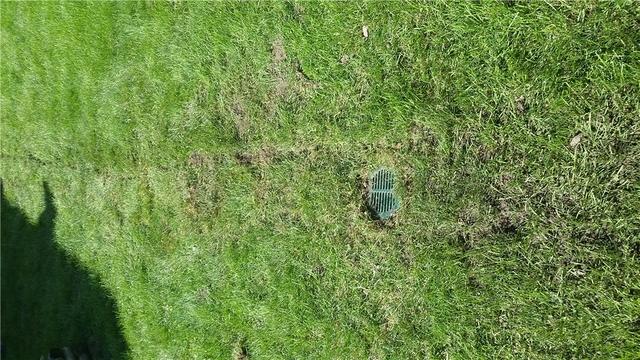
Buried Discharge Line is Almost Undetectable
Immediately after replacing the sod, the discharge line is already almost invisible. The only signs are the lines around the perimeter of the replaced sod (which will go away as the grass grows) and the unobtrusive LawnScape outlet, which allows the water to discharge without disrupting the landscaping.
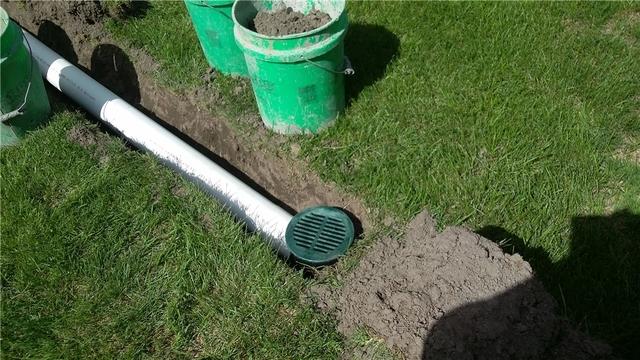
Discharge Line Removes Water Efficiently
By discharging the water far out into the yard and working with the grade of the lawn to ensure it doesn't just angle back toward the house, we can stop the removed water from flooding right back in.
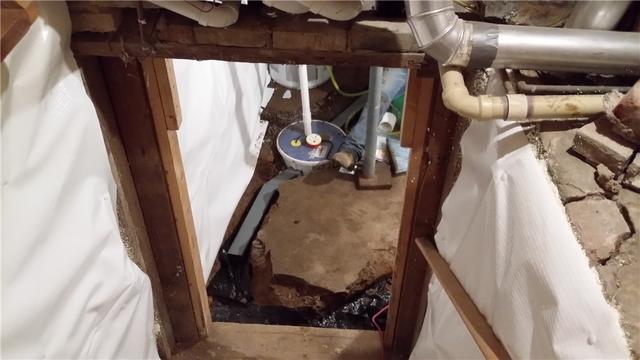
Super Sump Pump Actively Removes Water
Here's an artistic shot from the stairway to the basement, where the WaterGuard is being tied into the new Super Sump pump. By tying it in, the water is directed to the pump for removal.
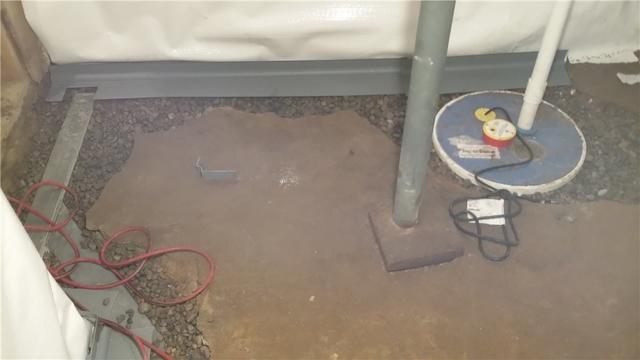
Close Up of Super Sump
Here's a less artistic shot of the Super Sump. You can see the discharge line coming from the pump - that will go all the way outside, under the lawn until the point of discharge where the water can be shuttled away from the house.
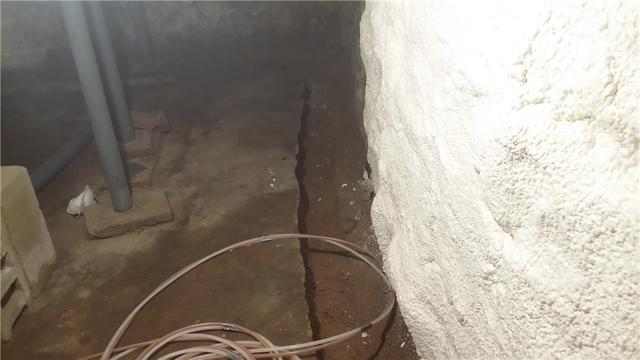
Removing the Floor for WaterGuard
The thing about a below-floor drain system is that we need to get...below the floor...to access it. We do that by removing a perimeter of the concrete, which we will repour after the system is installed.
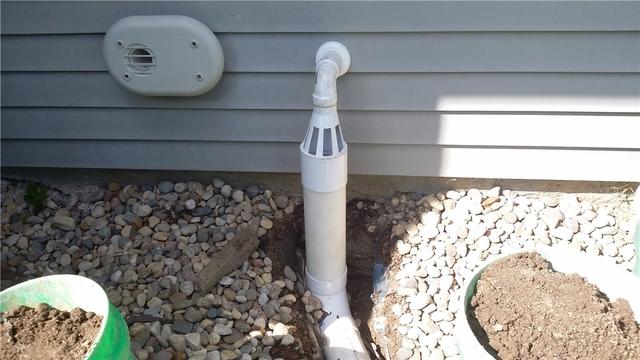
IceGuard Prevents Cold Weather Backups
Discharge lines can freeze in the winter, and when that happens the water can back up into the basement, which is the opposite of what we want to happen. IceGuard solves that by giving the water an escape route.
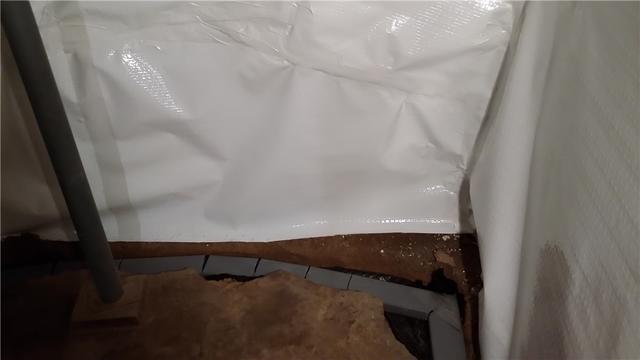
CleanSpace protects Basement from Crawl Space
We used CleanSpace on the walls adjacent to the crawl space to protect the basement from ambient moisture.

WaterGuard Installation in Progress
Mid-photo you can see a WaterGuard inspection port, which allows for easy access to the system for annual maintenance and the like.









